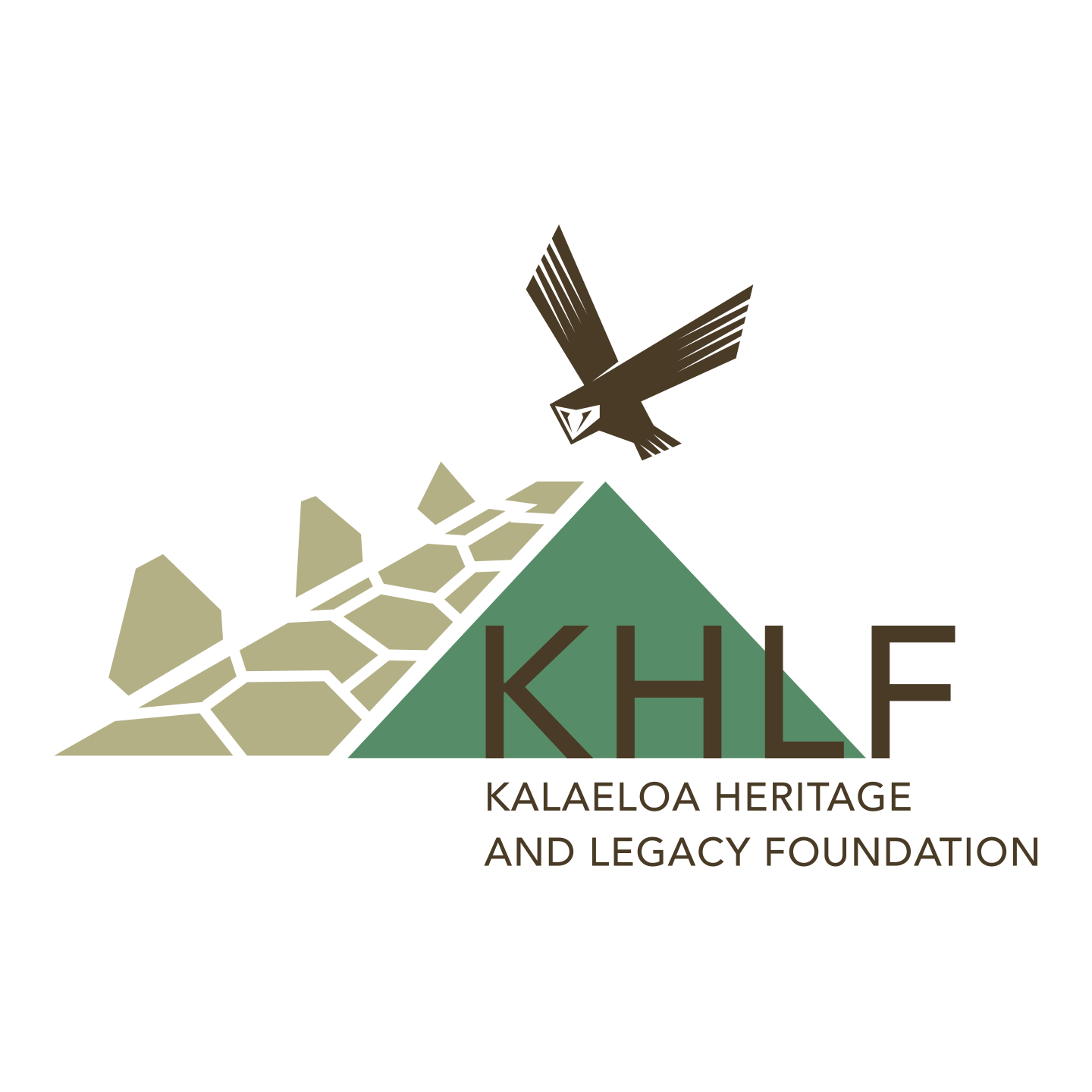Manoa Heritage Center
 On Saturday, January 14, members of the Manoa Heritage Center came to visit us at the Kalaeloa Heritage Park. They serve as the caretakers and docents at the Manoa Heritage Center. The Manoa Heritage Center was founded in 1996 by preservationists Sam and Mary Cooke, and is a non-profit organization, whose mission is to promote the thoughtful stewardship of the natural and cultural heritage of Hawai‘i. This remarkable site consists of Kūka‘ō‘ō Heiau, a Native Hawaiian garden and Kūali‘i, a Tudor-style house, built in 1911 that is presently the Cookes' private residence. The heiau and historic home are listed on the National Register of Historic Places.Currently, only Kūka‘ō‘ō Heiau and garden tours are available, guided by volunteer docents. Reservations are needed with two-week advance notice preferred. The Center is committed to preserving and interpreting the heiau, the Native Hawaiian garden, the historic home, Cooke family history and the natural and cultural account of Mānoa Valley for visitors to discover and appreciate!The Center’s Board of Directors represents a broad cross-section of professionals, and their mission, vision and long-range plans have been developed with the help of the community since its inception.The Mānoa Heritage Center also has two Advisory Committees:
On Saturday, January 14, members of the Manoa Heritage Center came to visit us at the Kalaeloa Heritage Park. They serve as the caretakers and docents at the Manoa Heritage Center. The Manoa Heritage Center was founded in 1996 by preservationists Sam and Mary Cooke, and is a non-profit organization, whose mission is to promote the thoughtful stewardship of the natural and cultural heritage of Hawai‘i. This remarkable site consists of Kūka‘ō‘ō Heiau, a Native Hawaiian garden and Kūali‘i, a Tudor-style house, built in 1911 that is presently the Cookes' private residence. The heiau and historic home are listed on the National Register of Historic Places.Currently, only Kūka‘ō‘ō Heiau and garden tours are available, guided by volunteer docents. Reservations are needed with two-week advance notice preferred. The Center is committed to preserving and interpreting the heiau, the Native Hawaiian garden, the historic home, Cooke family history and the natural and cultural account of Mānoa Valley for visitors to discover and appreciate!The Center’s Board of Directors represents a broad cross-section of professionals, and their mission, vision and long-range plans have been developed with the help of the community since its inception.The Mānoa Heritage Center also has two Advisory Committees:
- Distinguished members of the Native Hawaiian community who establish protocol and guidelines for Kūka‘ō‘ō Heiau.
- Prominent community leaders who are dedicated to friend-raising new supporters and designing exciting programs for the next generation of guests to enjoy.
Through the Center’s Board of Directors, Advisory Committees, Docents and through the monetary gifts of generous donors, the Mānoa Heritage Center is being prepared to carry Sam and Mary Cooke’s stewardship forward into perpetuity.For hundreds, perhaps nearly a thousand years, Kūka‘ō‘ō Heiau has watched over Mānoa Valley. Said to have been originally built by the Menehune, this heiau reflects the long and dynamic history of the Hawaiian Islands. Historical evidence suggests that the heiau eventually became an agricultural temple of the māpele class, dedicated to the rites and rituals surrounding food productivity. Restored in 1993, Kūka‘ō‘ō Heiau survives as the last intact Hawaiian temple in the greater ahupua‘a of Waikīkī and remains an extraordinary and timeless link to the past.The first settlers of Hawaiʻi arriving by canoe, brought many of their favorite plants for food, seasoning, medicine, making household items and implements to farm, build structures and use for clothing. Taro (kalo) became the staple of the Hawaiian diet and they developed hundreds of varieties, adapted to suit diverse terrain and weather conditions. Sweet potato (uala) was sometimes substituted for taro in the drier areas such as Honouliuli and Kualaka’i. Tumeric (ʻolena) was used to produce a brilliant yellow orange dye for clothing, coconut (niu) for bowls, drums and roof tops, and kawa (ʻawa) to ease a painful headache were treasured supplies.The Polynesians introduced an array of “Canoe Plants” representing those that may have come with ancient seafarers from the Marquesas, Tahiti, Samoa and other South Pacific archipelagoes. Some of these same plants thrive in our Kalaeloa Heritage Park.Interesting though this appears to be the same story for all of us dedicated to perpetuating an ancient past and its landscapesFollowing is a contribution from Manoa Heritage Center Board Member Jennifer Engle of their visit to the Kalaeloa Heritage Park:On Saturday, January 14 members of the Mānoa Heritage Center ‘ohana, including founder Mary Cooke, staff, and volunteer docents, participated in a huaka‘i (trip) to Kalaeloa Heritage Park (KHP). Located on the coast of moku Ewa, in the greater ahupua‘a of Honouliuli, Kalaeloa Heritage Park is a relatively undisturbed, 77-acre parcel with over 177 recorded cultural sites that consist of heiau and other habitation sites. Shad Kane, KHP Park Manager gave the MHC ‘ohana a wonderful two-hour tour of a section of the park. He shared mo‘olelo of the area while describing how the coral structures – the only extant coral structures remaining on O‘ahu – might have been used. Due to the integration of many upright stones, Kane explained that these structures are believed to be Tahitian in origin. Another fascinating feature of KHP are the sinkholes, or karsts, that have fresh water flowing underneath. A community based organization that relies on the many hands of dedicated volunteers, Kalaeloa Heritage Park, like Mānoa Heritage Center, is dedicated to the stewardship and preservation of this wahi pana. We are thankful that Shad shared KHP with us and look forward to hosting KHP volunteers at MHC one day soon.
